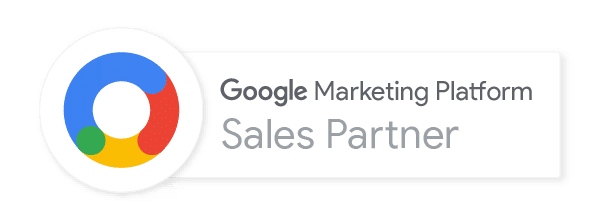The claim that Google Analytics 4 (GA4) will change the internet may seem like a lofty statement, but it’s true. If we take a step back and consider the fact that over 28 million sites currently run Google Analytics for measurement, it doesn’t seem like such a lofty claim anymore. In addition, we’re moving from an era of precision marketing to an era of predictive marketing and GA4 plays a big role in this seismic shift.
I remember a decade ago (or so), a bunch of us analytics nerds were sparring over analytics code placement on web pages. If you placed the analytics code snippet at the bottom of your pages, the page would load faster, but your data collection could be impacted (e.g., when a user navigates from page 1 to page 2 before page 2 is fully loaded). On the other hand, if you placed your analytics code at the top of your page, your data collection was likely to improve, but you could potentially slow page load time, thus hurting end-user experience and search engine rankings. Google then introduced the Asynchronous Tracking code, which allowed the rest of your page to load while the page continued to retrieve and execute the Google Analytics tracking library. Some sites started to see double-digit percent improvements in data collection accuracy and site speed.
Google has announced that it is making the shift from Universal Analytics to Google Analytics 4 (GA4). Cardinal Path’s recommendation to CTOs, CMOs and the analytics community is not to fully migrate to GA4 at this time, but rather to run GA4 concurrently along with your existing analytics code base. Google has not announced a Universal Analytics cutoff date, but we do know that at some point GA4 will be the standard code base.
When most people think about who will be most impacted by this change, marketers and analysts are some of the first people to come to mind! Both make sense, and both absolutely will be impacted. However, as a CTO myself, I understand that these roles are not singularly affected. Today’s CTOs, with their tech oversight, must keep up with emerging technologies, data collection, data privacy and governance, as well as the upskill of people and process improvements to maximize the return on new tech adoption.
Check out our past, and upcoming Google Analytics 4 Ask Me Anything panel webinar events
There are many implications with the move to GA4 and judging by the sheer volume of questions we’ve been fielding – a lot of confusion, too. We’ve broken down some of the key GA4 strategic considerations for CTOs to have on their radar in 2021.
3 Key GA4 Strategic Considerations for CTOs
GA4 is privacy-centric by design
Tackling data privacy is easily on the top of every CTO’s ‘to-do list’ for 2021 and beyond. GA4 offers rich data insights and behavior tracking while maintaining anonymity. GA4 has a privacy-centric design that brands will be able to rely on even as we move into a cookieless future and the lack of identifiers creates gaps in our data.
Leveraging multiple identity spaces (User-ids from signed-in users, Google Signals, or Device IDs), Google Analytics 4 will empower you to take better advantage of user authentication to your organization’s web and mobile app experience and Google’s own vast identity graph.
With multiple identity spaces, brands will tap into better insights about their user journeys. GA4’s approach to de-duplicating users allows for more robust cross-device and cross-platform data and reporting. As of the writing of this post, Google has nine platforms, each with over a billion users. If a user is logged into any one of these via web or mobile, and that user consents to share information (meaning that the user has not disabled Ads Personalization in their Google account), Google can tie together that user’s sessions in your organization’s own web and native-app data streams without you having to provide the user’s ID. This is truly a Google-only benefit.
Google can thus offer insights into users and behaviors that you can’t get otherwise, at least not as easily. By unifying web and mobile measurement, from an audience and user journey perspective, GA4 allows marketers to create a single user journey from the data associated with the same identity and to weave a more holistic view of the user’s interactions with your brand.
New and improved cloud capabilities
One major improvement in GA4 is that the concept of a session (a group of user interactions within the site) is no longer “limiting” the way we report and model the data. In GA4, you’ll have User Properties that can be leveraged to define segments of your users, Events that can track user interactions with the site/mobile app, and Parameters that can be used as metadata to add more color to the event/interaction you’re tracking. (For additional details, check out our recent blog post: What you need to know about Google Analytics 4)
Not only that, GA4 comes with a new data structure. This rich data, in its raw format, can be easily exported to BigQuery (Google’s cloud data warehouse that can be queried with SQ-like syntax). There are a number of streaming options, including exporting data from the current day. The timely availability and ease of accessibility of the raw data opens up a plethora of advanced analysis and ML/modeling opportunities.
It’s in a CTO’s best interest to plan ahead and ensure that this newly available GA4 raw data is governed according to their organizations’ policies. In addition, a wider set of stakeholders will likely want to leverage the availability of the raw data and the modeling/insights possibilities and will be knocking on doors of the CTOs for resources and support.
Adapting to the Unified Data Model
GA4 is based closely on Google Analytics for Firebase (referred to commonly as Firebase Analytics), and now web, Android, and iOS data streams are all populated into the same data model. The shared data model allows GA4 to record and report similar activities the same way across platforms.
For instance, to track a video interaction on your website into Google Analytics Universal, you might record a video start as follows:
Event Category = video
Event Action = start
Event Label = corporate video
Because you can now leverage the Firebase Analytics data model for web tracking, we could record this same interaction in both web and mobile app GA4 data streams as:
event_name = video_start
video_title = corporate video
GA4 can unify authenticated users across web and mobile app data streams
In Google Universal Analytics, cross-device reporting allows you to report across platforms but does not bridge web and mobile app data. For authenticated users, you can report website activity across desktop, tablet, and phone and mobile app activity across tablet and phone, but you can’t marry web and mobile app data.
Google Analytics 4, on the other hand, does enable you to report cleanly for authenticated users across web and mobile users, whether those users are authenticated directly to your website and app with a back-end CRM ID or authenticated to Google, which would allow Google Signals to apply, as outlined above.
Integrated mobile and website tracking will leap-forward your digital strategy.
Thanks to the integrations between the authenticated web and mobile app users outlined above, GA4 will empower organizations to take a significant leap forward in understanding user journeys, such as users who signed up for a newsletter on a website and then generated a higher-value conversion in a mobile app.
Universal tracking beyond web and mobile.
In addition, Google Analytics 4 is an extension of the “universal” aspect of Google Universal Analytics With Measurement Protocol, which was introduced when GA Universal rolled out in 2012. You could now track to Google Analytics through HTTP from any networked, programmed environment that the Google Analytics JavaScript libraries or SDKs did not apply, such as a non-Android/iOS mobile app, a point of sale, a kiosk, or another Web server.
Measurement Protocol is currently in alpha in GA4, so you’ll still be able to track from countless environments into GA4. GA4’s more agnostic event and parameter data model could be even better suited for tracking these different environments, just as it will serve to cleanly report user journeys across native app and web. In this way, GA4 can provide cohesive tracking and reporting across a wide range of platforms.
Early adopters have an advantage
Google is actively working on GA4, rolling out new and updated features regularly. However, there is still a ton of value in being an early adopter.
In speaking with clients and marketers from around the world, it’s clear that many are confused about when it makes the most sense for their organization to migrate to GA4. As mentioned earlier, right now, we are advising that focus on standing up dual tagging across their digital properties (web and apps) rather than making ‘the switch’ to GA4.
Dual tagging does not refer to pulling web and mobile app data into a single GA4 property. Instead, it denotes the approach of tracking the same user activity into two different systems: Google Universal Analytics and Google Analytics 4, in this case.
By implementing dual tagging, you can get your feet wet in GA4 while still benefiting from your Google Analytics Universal implementations near-term.
I’ve found the easiest way to explain the necessity of both the current Universal Analytics implementation and the new GA4 implementation is to compare it to a website’s staging and production environments. For a well-run website, you will have both. The staging site is currently like GA4. It’s where you can go in and play with things, customize properties, and try to adapt to all of the new updates and features. Your production site is the current Universal Analytics implementation. It’s tried and true and works well. At some point though, you will need to push staging to production, and you will want it to create as little disruption as possible.
Tag management systems such as Google Tag Manager can greatly facilitate dual tagging in that they allow you to:
- Take advantage of many of the same variables and triggers that you have already defined for your GA Universal tracking
- More easily incorporate any new tracking capabilities that may become available in GA4
The people implications of this platform shift.
If you’re planning to stand up dual-tracking, and this is definitely a best-practice approach, then the availability of resources could become an issue. It’s more work up front, but the benefits are significant as you’ll ensure continuity and pave the way for a seamless migration when the time comes.
Training is key. Like any migration, employees will need to know enough about the new platform to manage it properly and take the appropriate steps toward deployment in the near future. More learning resources are becoming available, including this new course from Google
And if you’re working with an agency like Cardinal Path, you can hand over most of the tasklist and maintain business as usual while your agency stands up a new measurement framework, dual-tracking, internal training, and monitors data health along the way.
Process implications of GA4.
While you’re maintaining the dual tagging, the analytics tagging for your website may require some additional governance. Workflow and governance features in tag management systems, including workspaces in Google Tag Manager, can help you organize the development of GA4 tags alongside existing GA Universal tags. The Approval Queue feature in GTM 360 can provide an additional degree of confidence in your GA tag updates.
Tag auditing tools such as DataTrue and ObservePoint can also help you govern dual tagging during your migration.
Making steps towards GA4 readiness
Preparing for the migration to GA4 and these 3 strategic considerations are no small lift for any organization. There is not only a time and resourcing commitment attached but implications across the entire organization. As a CTO it’s important to chart the course for the future migration of GA4 as you plan for organizational adoption of a new tech platform.
While you don’t need to take all of these steps right away, a general roadmap for your GA4 migration may include the following:
Strategically
- Develop your internal GA4 migration roadmap
- Allocate resources to stand up GA4 (dual tracking)
- For those not already taking advantage of Google Analytics hit-level data in Google Cloud Platform/BigQuery, plan to allocate resources for advanced analysis and ML/modeling and data activation
- Revisit your current measurement framework and KPIs for Universal Analytics
Tactically (once GA4 is stood up)
- Determine an overall account structure for GA4.
- Evaluate event tracking in Universal to determine which events would correspond to automatically collected events and parameters and which you’d need to create custom events and parameters for in GA4.
- Map Universal event dimensions, custom dimension, and custom metrics to custom dims and metrics in GA4.
- Map user-scope Custom Dimensions in Universal to custom user properties.
- Recreate ecommerce and goals.
- Map segments and view filters in Universal to audiences and comparison segments in GA4. (You can’t save comparison segments in GA4.)
GA4 is set to deliver transformational enhancements to the way you track user behavior across both websites and apps. This is not an update, but a migration and organizations need to prepare accordingly. Though the deadline for migration is not imminent, preparedness is key, since this new analytics platform will be so critical in securing the digital intelligence you need to be competitive.
Make a plan now and include dual-tracking in your strategy to ensure historical data capture, and get your team ramped up to start thinking about the features enhancements they can leverage in the near future.

Author

Chief Technology Officer Feras Alhlou previously co-founded E-Nor in 2003 and served as President until its acquisition by Cardinal Path in 2019. Feras is passionate about his work with some of the world’s most recognized brands and public sector organizations to deliver data-driven marketing value. A recognized thought leader on the Google Marketing tech stack, he has traveled the globe educating businesses, practitioners, and consultants, and he’s also co-author of Google Analytics Breakthrough: From Zero to Business Impact. Feras received a Masters of Engineering Management degree from the University of South Florida and a Bachelor of Science degree in Electrical Engineering from the University of Tulsa. He is a Certified Web Analyst, Board Member for Red Cross Northern California, and a 3rd-degree black belt in Aikido.
View all posts


















